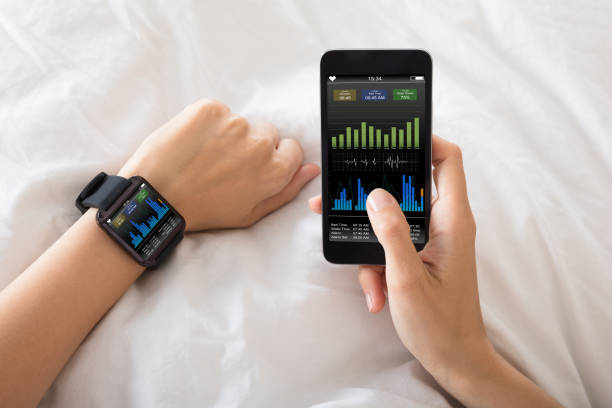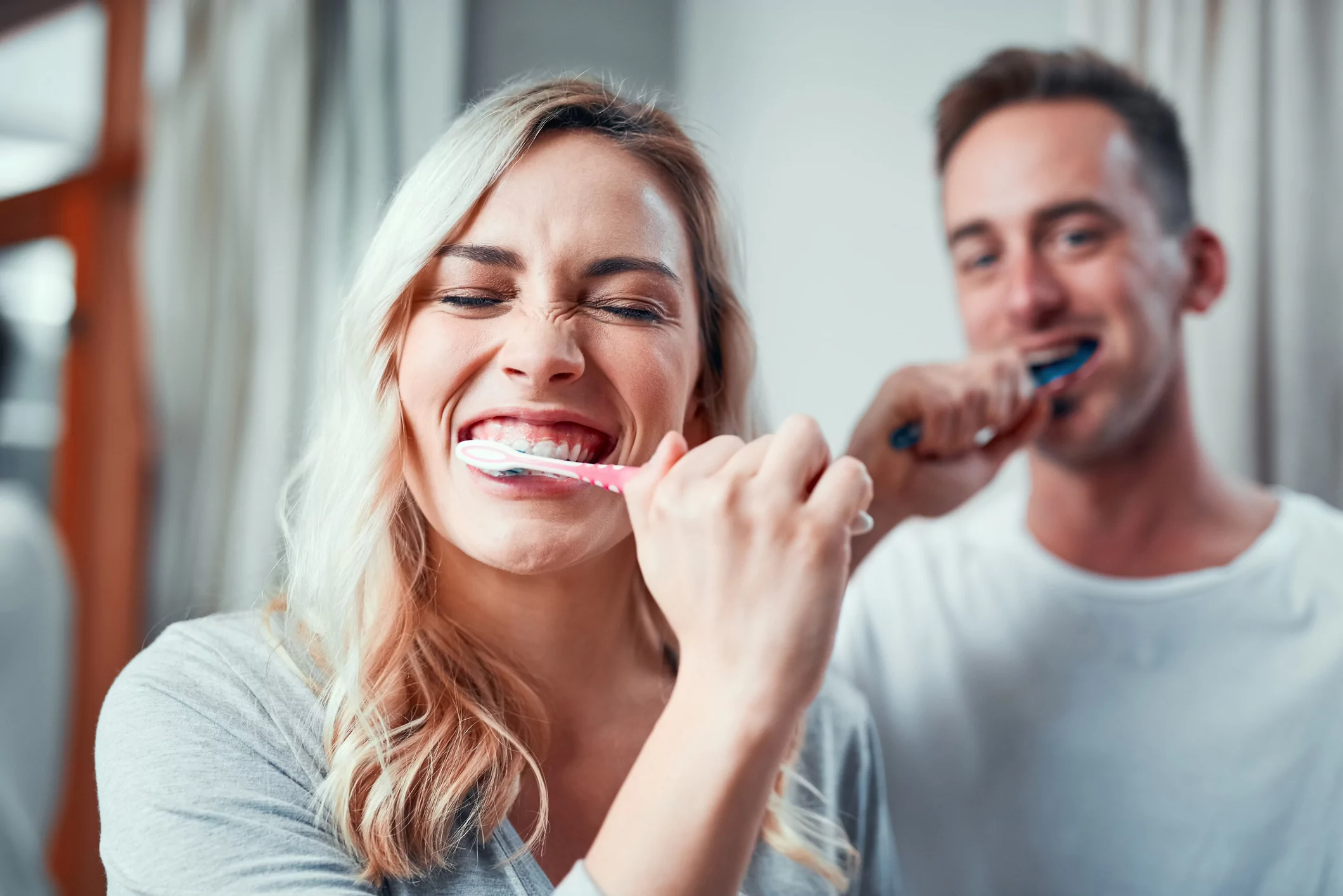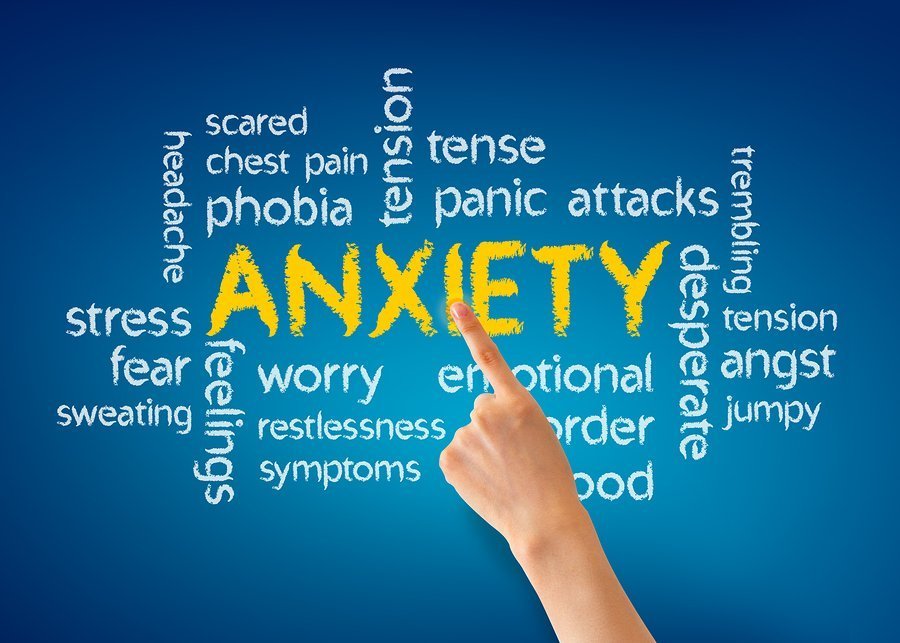Table of Contents
ToggleAre you tired of being tired? Do you wake up every morning feeling like you haven’t slept a wink? Well, you’re not alone. Many of us struggle with getting a good night’s sleep, and it’s not just an inconvenience – it can have serious consequences for our health and well-being. But fear not, because technology has come to the rescue in the form of sleep-tracking devices!
In this article, we’ll take a deep dive into the world of sleep-tracking devices and help you find the best one for your needs. So, put down that caffeine and get ready to catch some Z’s – with the help of a little technology, you’ll be sleeping like a baby in no time!
Types of Sleep-Tracking Devices
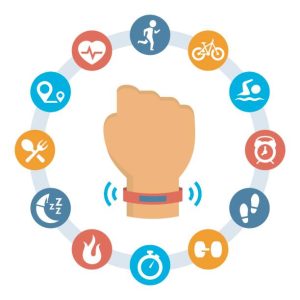
There are several types of sleep-tracking devices available in the market, each with its unique features and benefits. Wearable devices such as smartwatches and fitness trackers are among the most popular options. These devices typically come with built-in sensors that monitor various aspects of sleep, including movement, heart rate, and even blood oxygen levels. The data collected by these devices can be analyzed to provide insights into the quality of sleep.
Wearable Devices
Wearable devices, such as smartwatches and fitness trackers, are among the most popular types of sleep-tracking devices. They come equipped with built-in sensors that monitor various aspects of sleep, including movement, heart rate, and even blood oxygen levels. These devices provide accurate and reliable sleep-tracking data that can be analyzed to provide insights into the quality of sleep.
Sleep Tracking Rings
Sleep tracking rings are a type of wearable device designed to be worn on the finger. Equipped with sensors that measure heart rate, body temperature, and movement, these rings are comfortable to wear and provide accurate sleep-tracking data. Sleep tracking rings offer a discreet and convenient way to track sleep without the need for a bulky device.
Non-Wearable Devices
Non-wearable devices, such as bedside sleep trackers and under-mattress sleep trackers, are an alternative to wearable devices. These devices are placed near or under the bed and use sensors to track movement, breathing, and heart rate. The data collected can be accessed via a mobile app or web-based dashboard, providing a comprehensive view of sleep quality and duration.
Smart Pillows
Smart pillows are another type of non-wearable device that tracks sleep. These pillows contain sensors that detect movement and provide data on sleep quality and duration. They are designed to be comfortable and offer a seamless way to track sleep without the need for wearable devices. Smart pillows are a popular choice for those who want to track their sleep without having to wear a device on their wrist or finger.
Factors to Consider When Choosing a Sleep-Tracking Device
When choosing a sleep-tracking device, several factors should be considered to ensure that the chosen device meets your needs.
Accuracy
When choosing a sleep-tracking device, accuracy is a critical factor to consider. You want to ensure that the device provides reliable and accurate data on your sleep patterns. A device that is not accurate may provide misleading information, which can be detrimental to your sleep hygiene. Therefore, it is essential to choose a device that is known for its accuracy and reliability.
Comfort
Comfort is another important factor to consider when selecting a sleep-tracking device. You’ll be wearing the device for an extended period, and you don’t want it to disturb your sleep. Therefore, it is important to choose a device that is comfortable to wear and does not cause discomfort during sleep. An uncomfortable device may disrupt your sleep and affect the accuracy of the data provided.
Data Tracking and Analysis
Data tracking and analysis are other vital considerations when choosing a sleep-tracking device. The device should provide useful data and insights into your sleep patterns, such as how much deep sleep you’re getting or how often you wake up during the night. The device should also allow you to track trends and patterns over time. A device with comprehensive data tracking and analysis features will enable you to identify patterns and make informed decisions to improve your sleep.
Battery Life
Battery life is an essential factor to consider when selecting a sleep-tracking device. You don’t want the device to die during the night, resulting in incomplete sleep data. Therefore, it is crucial to choose a device with long battery life. A device with a short battery life may require frequent charging, which can be inconvenient.
Price
Finally, price is an essential consideration when choosing a sleep-tracking device. You want to choose a device that fits your budget without compromising the accuracy, comfort, and data tracking and analysis features. Therefore, it is important to compare different devices and their features before making a purchase decision. A high-priced device may not necessarily be the best option, and a low-priced device may not provide the necessary features and accuracy.
Best Wearable Sleep-Tracking Devices
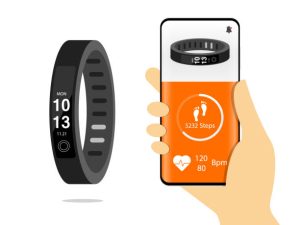
When it comes to tracking your sleep, wearable devices have become increasingly popular in recent years. Here are some of the best options available:
Fitbit Versa 3
The Fitbit Versa 3 is one of the best options available, featuring advanced sleep-tracking capabilities that can monitor your heart rate, and oxygen saturation, and even track your REM sleep cycles. The device also provides a Sleep Score to give you a better understanding of the quality of your sleep.
Garmin Venu 2
The Garmin Venu 2 is another excellent sleep-tracking device that offers advanced features such as tracking your breathing rate and respiration while you sleep. It also includes a range of features to help you manage your stress levels, which can have a significant impact on your sleep quality.
Apple Watch Series 7
The Apple Watch Series 7 is another popular option that features a range of advanced sleep-tracking features, including Sleep Mode, which helps reduce distractions and noise while you sleep. The device also provides personalized sleep goals and tracks your sleep trends over time.
Oura Ring
Finally, the Oura Ring is a unique wearable device that tracks your sleep by monitoring your body temperature and heart rate variability. It also provides a range of personalized insights to help you optimize your sleep routine.
Non-Wearable Sleep-Tracking Devices: Top Recommendations
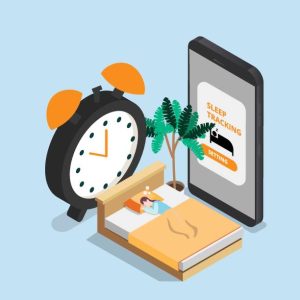
If you’re looking for a non-wearable sleep-tracking device, there are several options available that can help you monitor and improve your sleep quality. Here are some of the top recommendations:
Withings Sleep
The Withings Sleep is a device that is placed under the mattress and uses sensors to track sleep quality, heart rate, and snoring. It provides a sleep score and offers personalized coaching tips to help you improve your sleep habits.
Eight Sleep Pod Pro
The Eight Sleep Pod Pro is a smart mattress cover that provides detailed information about sleep stages, heart rate, and respiratory rate. It offers personalized coaching based on your data and can be integrated with other smart devices in your home.
SleepScore Max
The SleepScore Max is a contactless sensor that is placed on a bedside table to measure sleep quality, breathing patterns, and heart rate variability. It provides a sleep score and offers personalized tips for improving sleep quality.
Emfit QS
The Emfit QS is a sensor that is placed under the mattress to monitor sleep quality, heart rate, and breathing. It offers detailed data analysis and personalized recommendations for improving your sleep habits.
Other Sleep-Tracking Devices to Consider
If you’re looking for a sleep-tracking device to monitor your sleep patterns, there are several options available beyond the popular Fitbit and Apple Watch.
Beddit 3.5
Beddit 3.5 is a thin sensor that lies under your sheets and tracks your heart rate, breathing, and movement. It also provides a sleep score and personalized tips to improve your sleep.
Beautyrest Sleeptracker
The Beautyrest Sleeptracker is a sensor that goes under your mattress and tracks your sleep, including REM sleep and heart rate variability. It also has a smart alarm that wakes you up at the optimal time in your sleep cycle.
Zeeq Smart Pillow
The Zeeq Smart Pillow not only tracks your sleep but also has built-in speakers that can play music or white noise to help you fall asleep. It also has a snore tracker and gently vibrates to encourage you to change positions to reduce snoring.
Sleep Shepherd Blue
Finally, the Sleep Shepherd Blue is a headband that uses binaural beats to help you fall asleep and tracks your sleep stages. It also has a smart alarm that wakes you up at the optimal time in your sleep cycle.
Using Sleep-Tracking Devices for Optimal Sleep
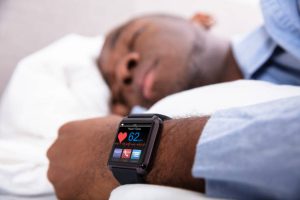
Using sleep-tracking devices can be a powerful tool for optimizing your sleep quality and duration.
Setting Sleep Goals
One of the first steps in using sleep-tracking devices for optimal sleep is setting sleep goals. These goals can be based on factors like the amount of time you want to spend in each sleep stage, the number of times you want to wake up during the night, and the total amount of sleep you want to get each night. By setting specific goals, you can track your progress over time and make adjustments as needed.
Analyzing Sleep Data
Once you have set your sleep goals, you can begin using your sleep-tracking device to analyze your sleep data. This data can provide valuable insights into your sleep patterns, including the amount of time you spend in each sleep stage, the number of times you wake up during the night, and the total amount of sleep you get each night. By analyzing this data, you can identify areas where you may need to make lifestyle changes or try different sleep aids.
Making Lifestyle Changes Based on Sleep Data
One of the key benefits of sleep-tracking devices is that they can help you identify lifestyle changes that can improve your sleep quality. For example, if you notice that you are not getting enough deep sleep, you could try adjusting your bedtime or creating a more conducive sleep environment. By making these changes based on your sleep data, you can optimize your sleep quality and duration.
Using Sleep-Tracking Devices with Other Sleep Aids
Sleep-tracking devices can also be used in conjunction with other sleep aids, such as relaxation techniques, sleep-promoting supplements, and prescription medications. By tracking the effects of these interventions on your sleep quality, you can fine-tune your sleep routine to achieve optimal results.
Common Features of Sleep-Tracking Devices
Sleep-tracking devices have become increasingly popular in recent years, with people looking to better understand their sleep patterns and improve the quality of their rest. These devices typically offer several common features to help users monitor their sleep and make adjustments to improve their sleep hygiene.
Sleep Stage Tracking
One of the most common features is sleep stage tracking, which uses sensors to monitor movement, heart rate, and breathing patterns to determine the different stages of sleep, including light sleep, deep sleep, and REM sleep.
Heart Rate Monitoring
Another important feature is heart rate monitoring, which tracks changes in heart rate throughout the night to provide insight into overall cardiovascular health and potential sleep disturbances.
Sleep Score Calculation
Sleep score calculation is another popular feature, which assigns a numerical score based on factors such as sleep duration, quality, and consistency. This score can help users understand how their sleep habits are affecting their overall health and well-being.
Sleep Goal Setting
Many sleep-tracking devices also allow users to set sleep goals, such as a target number of hours of sleep per night or a specific sleep score to aim for.
Sleep Diary Recording
Finally, sleep diary recording is a feature that allows users to manually input additional data about their sleep habits, such as caffeine or alcohol consumption, to help identify patterns and make adjustments for better sleep in the future.
Common Features of Sleep-Tracking Devices
Sleep Stage Tracking
One of the key features of sleep-tracking devices is the ability to track sleep stages. By using sensors to monitor movements and other biometric data during the night, these devices can determine when the user is in deep sleep, light sleep, or REM sleep. This information can be used to gain a better understanding of sleep quality and make adjustments to sleep habits accordingly.
Heart Rate Monitoring
Another important feature of sleep-tracking devices is heart rate monitoring. By tracking changes in heart rate throughout the night, these devices can provide insights into sleep quality and overall health. An elevated heart rate during the night could be a sign of sleep apnea or another sleep disorder.
Sleep Score Calculation
Sleep score calculation is another common feature of sleep-tracking devices. By analyzing data from sleep stage tracking and heart rate monitoring, these devices provide users with an overall score that reflects the quality of their sleep. This score can be used to track progress over time and adjust sleep habits as needed.
Sleep Goal Setting
Many sleep-tracking devices allow users to set specific sleep goals, such as a certain number of hours of sleep per night, and track their progress towards these goals. This feature can help motivate users to make changes to their sleep habits and improve their overall health and well-being.
Sleep Diary Recording
Finally, sleep diary recording is a useful feature of sleep-tracking devices. Users can record notes about their sleep habits, such as caffeine or alcohol consumption before bed, and track how these habits affect their sleep quality. This feature can help users identify patterns and make changes to their habits to improve their sleep over time.
How Sleep-Tracking Devices Work
Sensors Used in Sleep-Tracking Devices Sleep-tracking devices use a variety of sensors to monitor different aspects of sleep. Some devices use accelerometers to measure movement, while others may use sensors that monitor heart rate or brain waves. These sensors collect data throughout the night to provide a detailed record of a person’s sleep patterns.
Algorithms Used to Analyze Sleep Data
Once the data has been collected, algorithms are used to analyze the sleep data and generate reports on the quality and duration of sleep. These algorithms are typically designed to identify different stages of sleep, such as deep sleep and REM sleep, as well as periods of wakefulness during the night. The accuracy and effectiveness of these algorithms can vary depending on the device and the quality of the data collected.
Interpretation of Sleep Data
The interpretation of sleep data can be complex, and it is important to understand the limitations of sleep-tracking devices. While these devices can provide valuable insights into a person’s sleep patterns, they are not a substitute for professional medical advice. Sleep-tracking devices can be useful tools for identifying patterns and trends in sleep, but they cannot diagnose sleep disorders or provide personalized treatment recommendations. It is important to consult with a healthcare provider if you have concerns about your sleep patterns or suspect that you may have a sleep disorder.
The Importance of Sleep Hygiene
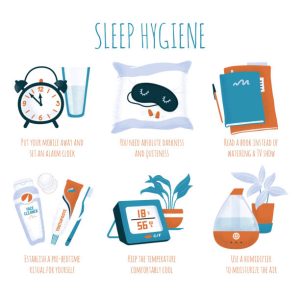
Sleep hygiene refers to a set of habits and practices that promote healthy and restful sleep. It is essential to prioritize good sleep hygiene as it is a vital component of overall health and well-being. Poor sleep hygiene can result in a range of negative consequences, including daytime fatigue, irritability, difficulty concentrating, and even an increased risk for chronic conditions such as obesity, diabetes, and heart disease.
Tips for Improving Sleep Hygiene
- Establish a consistent sleep schedule: Going to bed and waking up at the same time each day, even on weekends, helps regulate the body’s natural sleep-wake cycle, promoting deeper and more restful sleep.
- Create a relaxing bedtime routine: Engaging in calming activities such as reading a book, taking a warm bath, or practicing meditation or deep breathing exercises can help signal to the body that it is time to wind down and prepare for sleep.
- Create a comfortable sleep environment: Ensure that the bedroom is cool, dark, and quiet and that the bed and pillows are comfortable and supportive.
- Avoid stimulants before bed: Limit consumption of caffeine, nicotine, and alcohol before bedtime, as these can disrupt sleep patterns.
- Limit screen time before bed: Exposure to blue light from electronic devices can interfere with the body’s production of melatonin, a hormone that promotes sleep. Try to limit screen time in the hour leading up to bedtime.
How Sleep-Tracking Devices Can Help with Sleep Hygiene
Sleep-tracking devices, such as wearable fitness trackers or smartphone apps, can be useful tools for improving sleep hygiene. These devices can track the duration and quality of sleep, providing insight into patterns and potential disruptions. With this information, individuals can adjust their sleep habits to improve overall sleep quality. Some sleep-tracking devices can also provide personalized recommendations for improving sleep hygiene, such as adjusting bedtime routines or creating a more comfortable sleep environment. By utilizing these tools, individuals can take a more proactive approach to their sleep health and improve their overall quality of life.
The Benefits of Using Sleep-Tracking Devices
Improved Sleep Quality
One of the most significant benefits of using sleep-tracking devices is improved sleep quality. By monitoring your sleep patterns, you can identify any disruptions or issues that may be impacting your sleep quality. You can then take steps to address these issues, such as adjusting your sleeping position or changing your bedtime routine. This can lead to more restful and rejuvenating sleep, leaving you feeling more energized and refreshed in the morning.
Better Sleep Habits
Another benefit of sleep-tracking devices is that they can help you develop better sleep habits. By analyzing your sleep patterns over time, these devices can identify trends and provide recommendations for how to improve your sleep routine. For example, they may suggest adjusting your bedtime or wake-up time to better align with your natural sleep cycle.
Monitoring of Health Conditions
Sleep-tracking devices can also be valuable tools for monitoring health conditions. For example, they can track your heart rate and breathing patterns during sleep, providing insights into potential health issues such as sleep apnea. By identifying these issues early, you can take steps to address them and improve your overall health.
Reduced Daytime Fatigue
Finally, using a sleep-tracking device can help reduce daytime fatigue. By getting better quality sleep, you will feel more alert and focused during the day. This can lead to increased productivity and overall quality of life.
Potential Drawbacks of Using Sleep-Tracking Devices
Over-reliance on technology
One major concern with using sleep-tracking devices is the risk of over-reliance on technology. While these devices can help identify patterns and trends in sleep quality, they should not replace the advice of a medical professional. Relying solely on a sleep-tracking device to diagnose and treat sleep issues can be dangerous and ineffective.
Inaccuracy of sleep data
Another potential drawback of using sleep-tracking devices is the inaccuracy of the data they provide. While many devices claim to be highly accurate, there are limitations to the technology. Factors such as movement during sleep or the placement of the device on the body can affect the accuracy of the data. Some devices may not account for external factors such as noise or temperature that can impact sleep quality.
Sleep interruptions caused by the device
Sleep-tracking devices can also cause sleep interruptions, which can impact the overall quality of sleep. Some devices require users to wear a wristband or attach a sensor to their body, which can be uncomfortable or disruptive during sleep. The use of electronic devices such as smartphones or tablets before bedtime can interfere with the body’s natural sleep processes, making it more difficult to fall asleep.
How to Get the Most Out of Your Sleep-Tracking Device
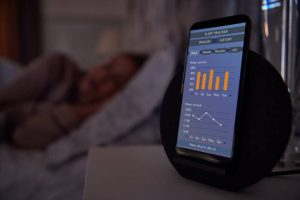
Regularly review sleep data
One of the most important things you can do to get the most out of your sleep-tracking device is to regularly review your sleep data. This will help you to identify patterns in your sleep and understand your sleep quality. Pay attention to metrics such as your sleep duration, the number of times you wake up during the night, and the amount of time you spend in different stages of sleep.
Use data to make lifestyle changes
Once you have reviewed your sleep data, use it to make lifestyle changes. For example, if you notice that you are consistently getting less than the recommended amount of sleep, you may need to adjust your bedtime or create a bedtime routine to help you fall asleep faster. Alternatively, if you notice that you are waking up frequently during the night, you may need to address factors such as stress or noise in your sleeping environment.
Experiment with different sleep-tracking devices
Experimenting with different sleep-tracking devices can also help you to get the most out of your sleep data. There are many different types of devices available, ranging from simple smartphone apps to more advanced wearable devices. Different devices may track different metrics, such as heart rate or breathing patterns, which can provide additional insights into your sleep quality.

